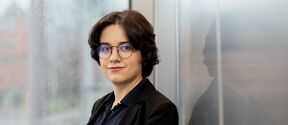International group of researchers: Mobile phone data should be utilized more to curb the corona pandemic

Data gathered from mobile devices could help to curb the spread of the corona pandemic and to evaluate the effectiveness of the related restrictions – provided that privacy and anonymization are well taken care of. Decision-makers and authorities should also increase the use of this data in collaboration with researchers, mobile network operators and other instances. Data protection authorities and non-governmental organizations should also be included in the discussion.
This is the message from an international group of researchers, whose research article on the subject was recently published in the recognized Science Advances scientific journal. The article includes researchers from different fields – including data scientists, network theoreticians and epidemiologists – from several top universities, such as Harvard and Oxford Universities and the Massachusetts Institute of Technology (MIT).
The group includes Professor Jari Saramäki from Aalto University in Finland. Saramäki researches social networks and the mathematics of the spreading processes through the utilization of, for instance, anonymized mobile phone data. 'Mobile phones provide information on humans’ mobility, among other things: mobile network operators can calculate the number of mobile phones that have moved between two base stations or, for example, between two cities, during some period,' Saramäki states.

Jari SaramäkiUnderstanding how people move between cities and areas is also important for the sake of modelling the spread of the epidemic.
This helps to understand the extent to which the recommendations and restrictions on movement are working and how the situation evolves as the restrictions are removed. For this reason, researchers, authorities and companies offering mobile services have begun collaboration in order to evaluate and visualize the effects of the restrictive measures.
'Understanding how people move between cities and areas is also important for the sake of modelling the spread of the epidemic. This can prove greatly useful if mobility restrictions are removed locally or if regional isolation becomes a necessity in the future as well,' Saramäki continues.
On a smaller, urban scale, the data can be used to identify 'hotspots' — times and places where the density of people increases the risk of the disease spreading. More exact location data, collected by e.g. mobile phone operating systems, can reveal how much of their time people spend at home, workplace or elsewhere. Information on how many close contacts people have would be particularly useful for modelling the epidemic, but gathering this type of data is challenging for both technical and privacy reasons.
The opportunities provided by data gathered through mobile devices have not been fully utilized thus far. According to the researchers, one reason is that the authorities rarely have the competence or work force to process such complex data, which requires multidisciplinary expertise to analyse. Companies may also be reluctant to release data from mobile devices, even if it is non-identifiable, aggregated and anonymized. 'Matters of privacy are often at the core of the issue, and solving and addressing them openly should be taken very seriously,' Saramäki says.
Link to the research article: https://doi.org/10.1126/sciadv.abc0764
English translation: Annika Rautakoura
Read more news

Sebastian Szyller: I want to make machine learning more dependable and resilient to attacks
Sebastian Szyller has been appointed assistant professor at Aalto University Department of Computer Science as from 1 September 2025. He studies how to train privacy-preserving machine learning models, how to safeguard them and ensure robust predictions in untrusted environments
The pilot project for direct article delivery from the National Repository Library ends
Aalto University has been participated in the pilot project for direct article delivery with the National Repository Library and Kopiosto from 2023 to 2025. The pilot ends on 19th December.
Meet the new ELLIS Institute PIs: Azade Farshad advances AI for medical applications
Farshad’s research background is in computer vision and generative models.






